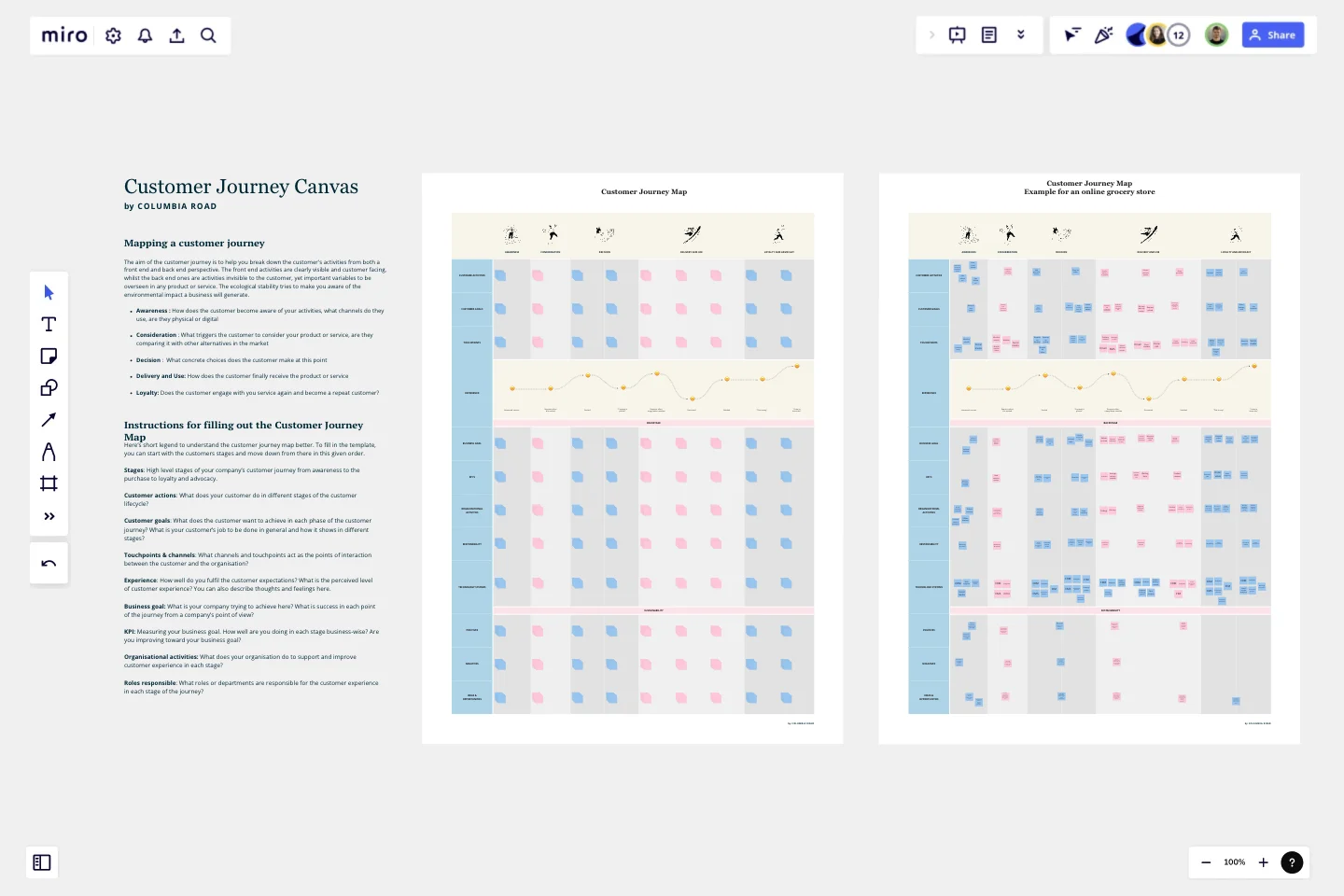Customer Journey Map by Columbia Road
The aim of the customer journey is to help you break down the customer's activities from both a front-end and back-end perspective.
The front-end activities are clearly visible and customer-facing, whilst the back-end ones are activities invisible to the customer, yet important variables to be considered in any product or service.
The sustainability layers helps you stay aware of the environmental impact a business will generate, thinking about positives, negatives and ideas worth exploring.
This template was created by Columbia Road.
Get started with this template right now.
Design Research Template
Works best for:
UX Design, Design Thinking, Desk Research
A design research map is a grid framework showing the relationship between two key intersections in research methodologies: mindset and approach. Design research maps encourage your team or clients to develop new business strategies using generative design thinking. Originally designed by academic Liz Sanders, the framework is meant to resolve confusion or overlap between research and design methods. Whether your team is in problem-solving or problem space definition mode, using a research design template can help you consider the collective value of many unrelated practices.
Service Blueprint by Hyperact
Works best for:
Research & Design
The Service Blueprint template is perfect for visualizing the orchestration of service components. It maps out frontstage and backstage elements, helping you analyze and enhance customer experiences. Use this template to align teams, identify pain points, and streamline processes, ensuring a seamless service delivery. It's ideal for creating a shared understanding of service dynamics among stakeholders and collaborators.
The Storyboarding Workshop Template
Works best for:
Storyboard, Design, Planning
Kick off your creative projects with the Storyboard Canvas template. This template is designed to help you map out your interactive video projects, providing a clear roadmap through branching scenarios. It's perfect for UX designers, marketers, and creative teams to visually organize and communicate the narrative flow. Use it to outline scenes, choices, and outcomes, ensuring every project element is accounted for and visually represented, making collaboration and brainstorming seamless.
Practical Customer Journey Mapping by Alex Gilev
Works best for:
Customer Journey Map
Today, customers hold companies to high standards for product quality and user experience.
Experience Mapping Template
Works best for:
Desk Research, Mapping
Plan your product according to your customer’s needs and desires with the Experience Map Template. Bring a customer-centric approach to product development and branding.
Service Blueprint by Slalom Philadelphia
Works best for:
Research & Design
The Service Blueprint by Slalom Philadelphia helps you map out service interactions and backstage processes. It's perfect for identifying service gaps and optimizing workflows. Use this template to align teams, improve customer experiences, and ensure seamless service delivery. It's ideal for fostering collaboration and strategic planning, making it a valuable tool for service design and improvement initiatives.
